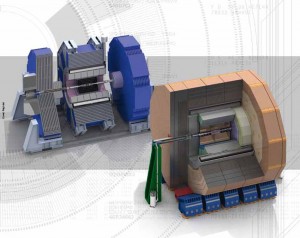The draft of the Detailed Baseline Design report (DBD) of ILC physics and detectors is complete and has been submitted to the Project Advisory Committee (PAC) of the ILC Steering Committee (ILCSC) for review.
This report presents the achievements of physics and detector R&D activities during the Letter-of-Intent process (LOI) since 2007. It summarises the large amount of output from five years’ work in detail in two volumes. The physics volume describes considerable physics cases for ILC for investigating the new physics landscape which we caught a glimpse of by the discovery of the Higgs-boson-like particle at the LHC, and for questing for answers to other fundamental questions of particle physics. The detector volume presents two detector designs, SiD and ILD, with feasible detector technologies and the capability to accomplish the expected physics studies. Their experimental performance is demonstrated for precision with a number of benchmark simulations. Combined with the accelerator volumes of GDE, they form a part of the entire Technical Design Report.
As I reported a few times in ILC NewsLine, we began to prepare for this report more than a year ago and passed a few milestones to complete the draft. The plans of contents were monitored by the International Detector Advisory Group (IDAG) during the KILC12 workshop last April. Through this process the input materials were rearranged and clear guidelines were given for drafting. The first set of drafts was submitted to IDAG for review at the end of September. In October, IDAG met for three days during the LCWS12 in Arlington, Texas, to examine the draft content and interview each author team to suggest a number of improvements. Every section was polished further through November.
The both volumes became larger in size than originally planned. The physics volume is about 220 pages and the detector volume is about 500 pages long. With this report we wish to convince the experts of the field of the feasibility and capability of the ILC experiments. Thus a lot of details need to be presented. Indeed a large number of frontend technologies have been developed successfully both for hardware and software and they were harmonised in two detector systems to provide physics results. We hope the rich information contained in the report shows that we have reached the intended goal of the LOI process.
We consider the review by PAC, to be held at KEK next week, very important. The PAC review is an external one for ILCSC and tells us whether the report is really convincing to the experienced reviewers. The completed draft was sent also to IDAG again, which will check the improvements after its review in October. Three IDAG members including the chair will join the PAC meeting to augment PAC’s detector members. Formally the IDAG review is considered to be internal. However, as most members are experts from outside the ILC community, in practice the IDAG review was an external review. And the coming joint review will make a rigorous peer review.
When successful, this review will be a good sign for us to go forward and take the next step. In the last chapter we included our wish for the future. While much progress has been made, our effort is yet in the R&D phase. In the next phase, we need to include more engineering studies in parallel with further detector R&D for improvement. More importantly, some parts of the design work require a definite knowledge about the site. In order to advance the detector design in view of future installation, this point becomes crucially important. We wish, as the ILC project itself advances forward, this open issue will be pinned down. I hope the completion of our draft of DBD will be effective for such progress of the project, too.



Recent Comments